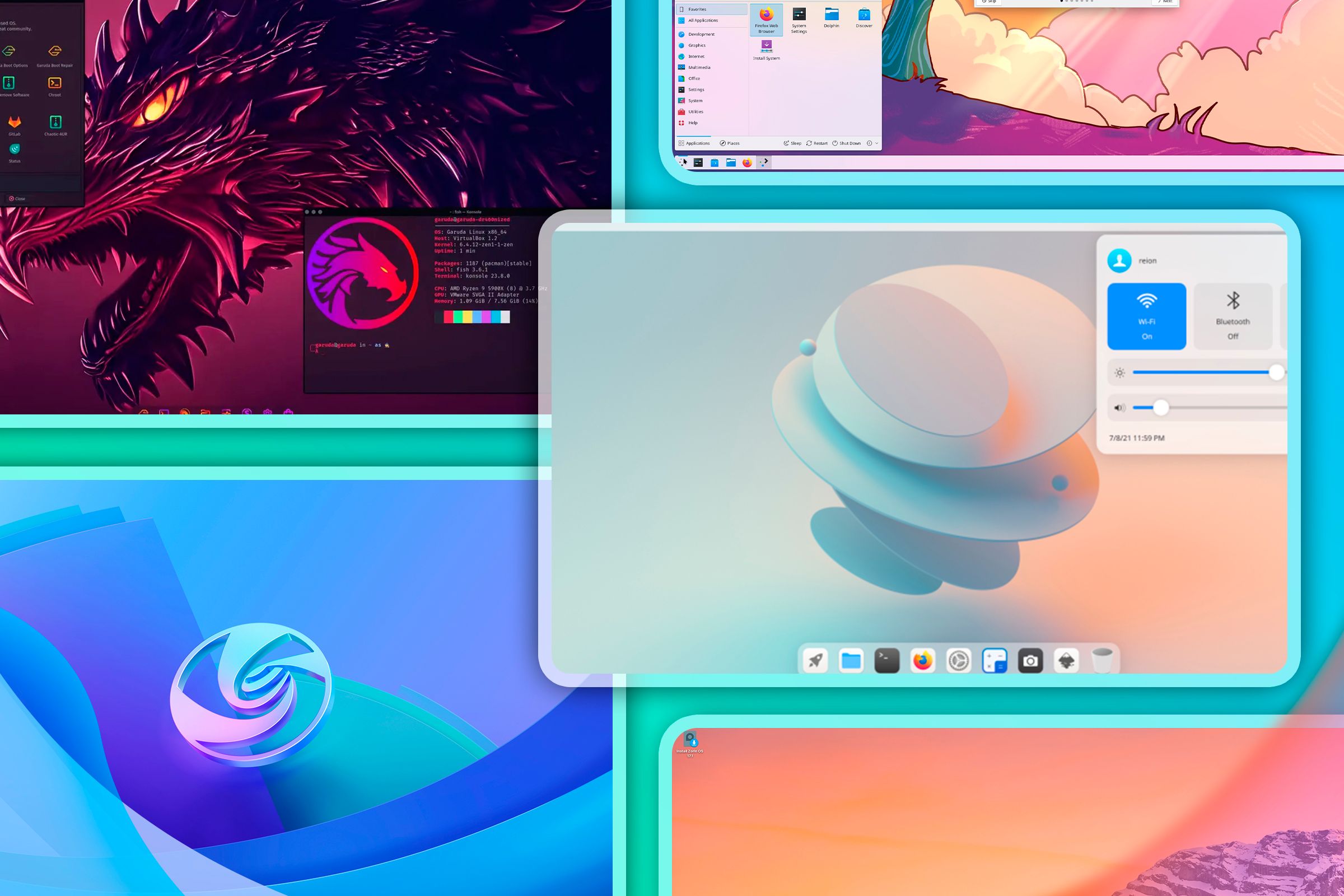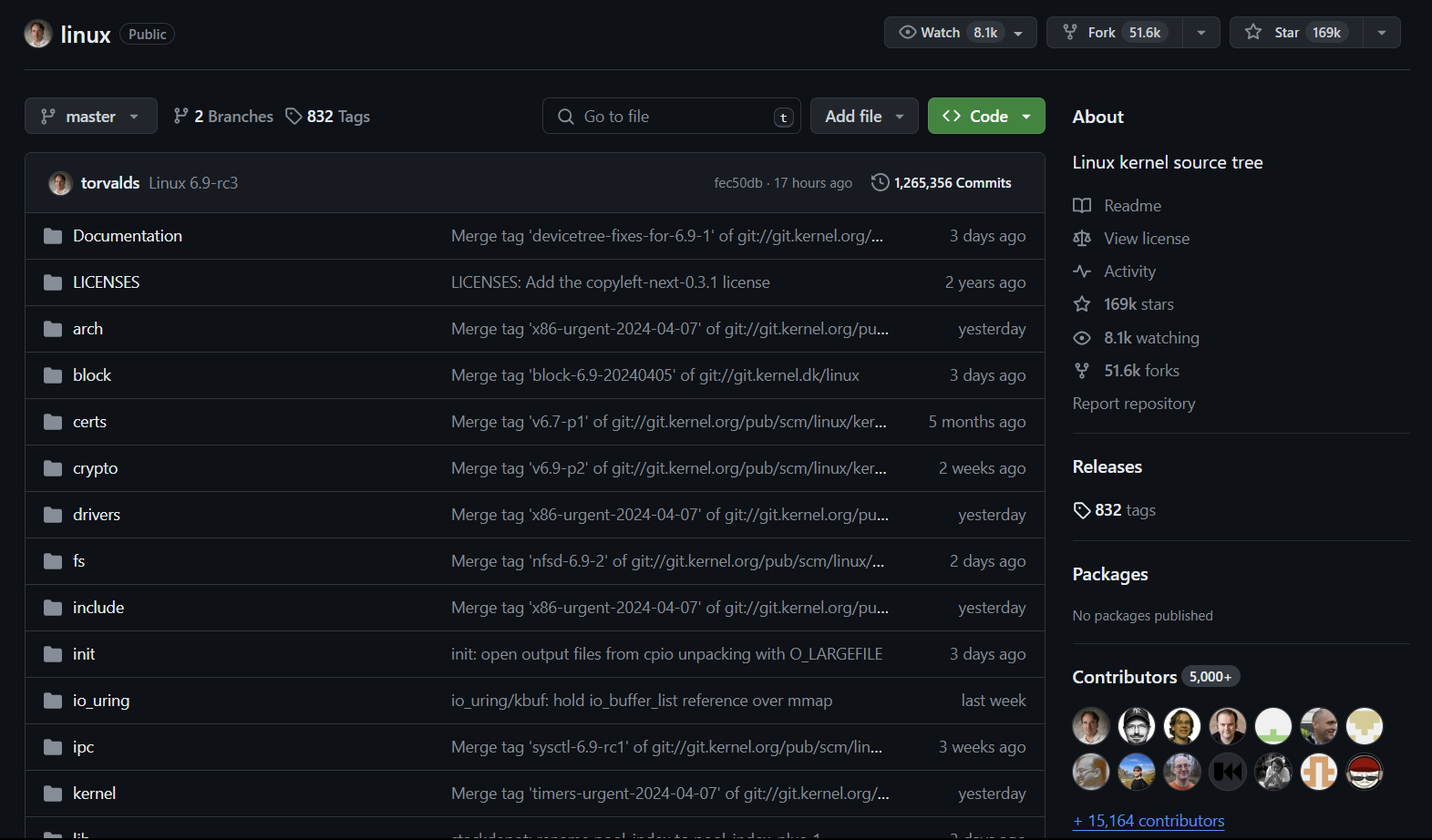Key Takeaways
- Linux isn’t an OS, it’s a kernel that different distros build upon, leading to diverse version numbers.
- New kernel versions offer benefits like improved hardware support and security protection.
- Distributions follow unique versioning systems not directly tied to the Linux kernel, offering flexibility.
Apple recently released macOS 15 and we expect Microsoft to announce Windows 12 anytime now! So, what’s the next big Linux release? Come to think of it, what’s the current version of Linux? Google tells me Linux is on version 6.x! But Ubuntu is on version 24.04! What does that even mean?
Why There’s No Single Version of the Linux Operating System
You might already know that there are many “varieties” of Linux. Here are a few of them with their latest versions (at the time of writing):
- Ubuntu 24.10
- Kubuntu 24.10
- Linux Mint 22
- Manjaro 24.1
- Fedora 40
Since Ubuntu, Manjaro, and Fedora are different from one another, it makes sense for each to have a different version number. Kubuntu is based on Ubuntu, so both have the same version! However, Linux Mint is also Ubuntu-based, so why are there different version numbers? Is it lagging behind Ubuntu? And why is Linux proper still stuck at version 6.11?
This confusion stems from a basic misconception! Linux, strictly speaking, is not an operating system. The name Linux technically refers to the kernel—the core component of an operating system that manages hardware resources and provides essential services. Think of the kernel as the engine of a car. Just as different car models can use the same engine, various Linux distributions (distros) use the Linux kernel as their foundation.
The distros build on the Linux kernel by adding a package manager for software installation and updates, desktop environments for graphical interfaces, pre-installed applications, etc., to deliver a complete operating system. Ubuntu, Kubuntu, Linux Mint, Manjaro, and Fedora, are all examples of Linux distros.
Now, distros don’t get a version upgrade following the Linux kernel. Some update themselves following a set routine, bundling in all the latest stuff (including the kernel) at that point in time. Others update themselves as soon as anything new is released. We’ll talk about distro versioning in a later section.
The Linux Kernel
The first release of Linux was version 0.0.1 in September 1991, containing around 10,000 lines of code! At the time of writing, the latest version is Linux 6.11, with over 30 million lines of code, with roughly 60% of which are drivers to ensure compatibility with different hardware.
To check your kernel version, open the terminal and type:
uname -r
Newer kernel versions typically bring several benefits:
- Enhanced driver compatibility—supporting newer hardware components or peripherals.
- Bug fixes—addressing minor annoyances to critical system stability problems.
- Security patches—protecting against newly discovered vulnerabilities.
- Performance improvements—for better resource management, reduced power consumption, or faster processing for specific tasks.
Updating your kernel depends on your distribution, but generally involves using your system’s package manager or a dedicated kernel update tool.
Should You Upgrade to Newer Kernel Versions if Available?
If a new Linux kernel version is made available in your distro’s official repository (repo), you can install it to keep your system updated—especially if it’s a Long-Term Support (LTS) release. However, there’s no need to rush and manually install a new kernel version from source—in fact, I’d advise against doing so!
While newer kernels offer advantages, there could be compatibility issues with existing hardware or software that are not yet optimized. As such, we recommend waiting for your distro to officially release the new kernel in their repos before installing it.
Also, check whether you’re installing a LTS kernel or a non-LTS one. Non-LTS versions are typically supported for 3-4 months. Using them means you’ll need to routinely update to newer releases. However, LTS versions are supported for two years (sometimes longer), eliminating the need for constant updating.
As a rule of thumb, if your Linux system is stable and you’re using an LTS kernel, there’s no urgent need to upgrade it. Generally, applying security updates as notified by your OS is sufficient. Consider updating if your current kernel is no longer supported or you’re experiencing known issues that the newer kernel resolves.
So, How Does Linux Distribution Versioning Work?
Each distribution follows its own versioning system and is rarely influenced by the kernel version it’s using. Ubuntu, one of the most popular distributions, uses a year.month versioning system, releasing two versions each year—in April and October.
At the time of writing, Ubuntu 24.10 is the latest version released in April 2024. The next version expected is Ubuntu 25.04, to be released in April 2025. Now, Ubuntu has many flavors or spins. This includes Kubuntu, Xubuntu, Lubuntu and many others. As a result, all these distros adopt Ubuntu’s versioning system.
Ubuntu also offers Long-Term Support (LTS) versions every two years. Each Ubuntu LTS version receives 5 years of standard support, while non-LTS releases are supported for 9 months.
Ubuntu 24.04 is the latest LTS release.
Then there’s Linux Mint. It’s based only on Ubuntu’s LTS releases to ensure a stable and reliable experience. It doesn’t follow Ubuntu’s versioning system. The latest version is Linux Mint 22—based on Ubuntu 24.04.
Fedora is another popular Linux distro that releases two versions each year, in the months of April and October. The latest version of Fedora is 40! There are no LTS releases, as the distro aims to deliver a stable yet cutting-edge experience.
Speaking of cutting-edge, we have Manjaro—an Arch-based distro following a rolling-release cycle. Here, the distro is perpetually upgraded with new tools, kernel updates, and more shortly after they are made available, making it perfect for users who can’t wait for the latest features.
Interestingly, even rolling release distros sometimes use version numbers or names for their installation media to help users identify the age of the installation image. For example, the current installation media for Manjaro is version 24.1.
The world of Linux versioning can be complex but no doubt fascinating, reflecting the diversity and flexibility of the open-source ecosystem. It’s an efficient system that allows for rapid innovation, customization, and choice, as users can update or stay back as they see fit. While it may seem confusing at first, once you start using it, everything will start making sense, like using Microsoft Office 24 on Windows 11.







